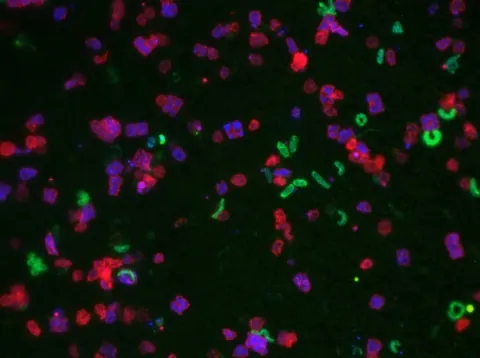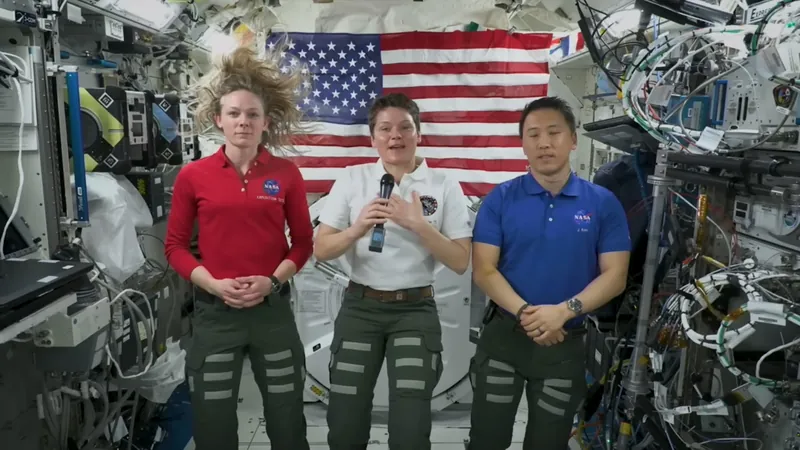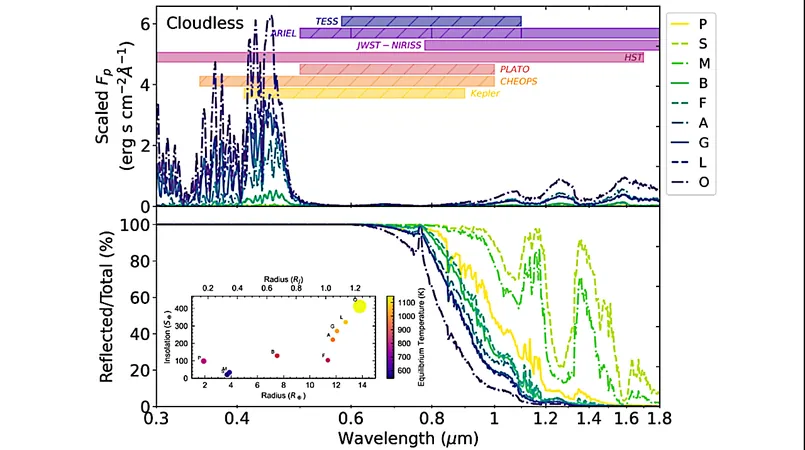
The Groundbreaking Discovery: How Bacteria Thrive in Their 'Sex Lives' and Form Species
2025-01-22
Author: Daniel
Introduction
Scientists have long grappled with the idea of how bacteria, vastly different from plants and animals, form distinct species. However, a revolutionary study led by Kostas Konstantinidis from Georgia Tech has turned this long-held belief upside down. Until now, it was commonly thought that bacteria, due to their unique genetic exchange methods and enormous populations, did not possess the capacity to form identifiable species.
New Insights into Bacterial Evolution
New research indicates otherwise. Konstantinidis and his team reveal that not only do bacteria create species, they also sustain these varieties through a surprisingly "sexual" process. “The next question was how individual microbes within the same species maintain their cohesiveness. In essence, how do bacteria remain similar?” Konstantinidis explained.
Traditional Views vs. New Findings
Traditionally, it was believed that bacteria predominantly evolved through binary fission—a form of asexual reproduction, with only sporadic genetic exchanges. Utilizing a cutting-edge bioinformatics technique combined with extensive genome data, the researchers tackled their exploratory hypothesis regarding the emergence and maintenance of bacterial species. Their findings, recently published in *Nature Communications*, unveil that the sexual dynamics of bacterial evolution may be far more intricate than previously acknowledged.
Focus of the Study
The study focused on how specific microbial species preserve their unique identities. The research team meticulously collected and sequenced over 100 strains of *Salinibacter ruber*—a salt-loving microbe from solar salterns in Spain—alongside previously sequenced *Escherichia coli* genomes from livestock farms in the U.K. By comparing the genetic information of closely related microbes, they scrutinized how genes were exchanged among populations.
Key Findings on Genetic Exchange
Results revealed that a mechanism known as “homologous recombination” plays a pivotal role in maintaining the integrity of microbial species. This process enables microbes to swap DNA with one another, replacing their own similar genetic sequences with the new material. Notably, the recombination occurs randomly throughout the microbial genome, not confined to select areas, marking a drastic difference from traditional sexual reproduction observed in animals, plants, and fungi, where DNA exchange occurs during meiosis.
Implications of the Research
"What we've discovered could radically alter our understanding of bacterial evolution," Konstantinidis noted. “This ongoing genetic material exchange acts as a cohesive force, ensuring that members of the same species remain similar.”
Additionally, analysis showed that bacteria from the same species are significantly more likely to share DNA with each other than with different species, thus reinforcing unique species boundaries.
Broader Impact
This research addresses an enduring challenge in microbiology, profoundly impacting various fields from environmental science to medicine and public health. It provides critical insights for identifying, modeling, and regulating organisms of clinical and environmental importance. The innovative methodologies employed in this research also offer a valuable molecular toolkit for future epidemiological studies and investigations into microbial diversity.
Collaboration in Research
The collaborative effort involved contributions from esteemed researchers, including Ramon Rossello-Mora at IMEDEA in Majorca, Spain, and Rudolf Amann at the Max Planck Institute for Marine Microbiology in Bremen, Germany, providing essential data from natural microbial populations.
Conclusion
In summary, Konstantinidis and his team’s revelations about the evolutionary and reproductive nuances of bacteria challenge existing paradigms and pave the way for a deeper understanding of the microbial world. Understanding how these minuscule organisms maintain distinct species has never been more critical, especially given their implications for health, environment, and industry. Don’t miss out on the essential knowledge that changes everything we thought we knew about bacteria!



 Brasil (PT)
Brasil (PT)
 Canada (EN)
Canada (EN)
 Chile (ES)
Chile (ES)
 Česko (CS)
Česko (CS)
 대한민국 (KO)
대한민국 (KO)
 España (ES)
España (ES)
 France (FR)
France (FR)
 Hong Kong (EN)
Hong Kong (EN)
 Italia (IT)
Italia (IT)
 日本 (JA)
日本 (JA)
 Magyarország (HU)
Magyarország (HU)
 Norge (NO)
Norge (NO)
 Polska (PL)
Polska (PL)
 Schweiz (DE)
Schweiz (DE)
 Singapore (EN)
Singapore (EN)
 Sverige (SV)
Sverige (SV)
 Suomi (FI)
Suomi (FI)
 Türkiye (TR)
Türkiye (TR)
 الإمارات العربية المتحدة (AR)
الإمارات العربية المتحدة (AR)